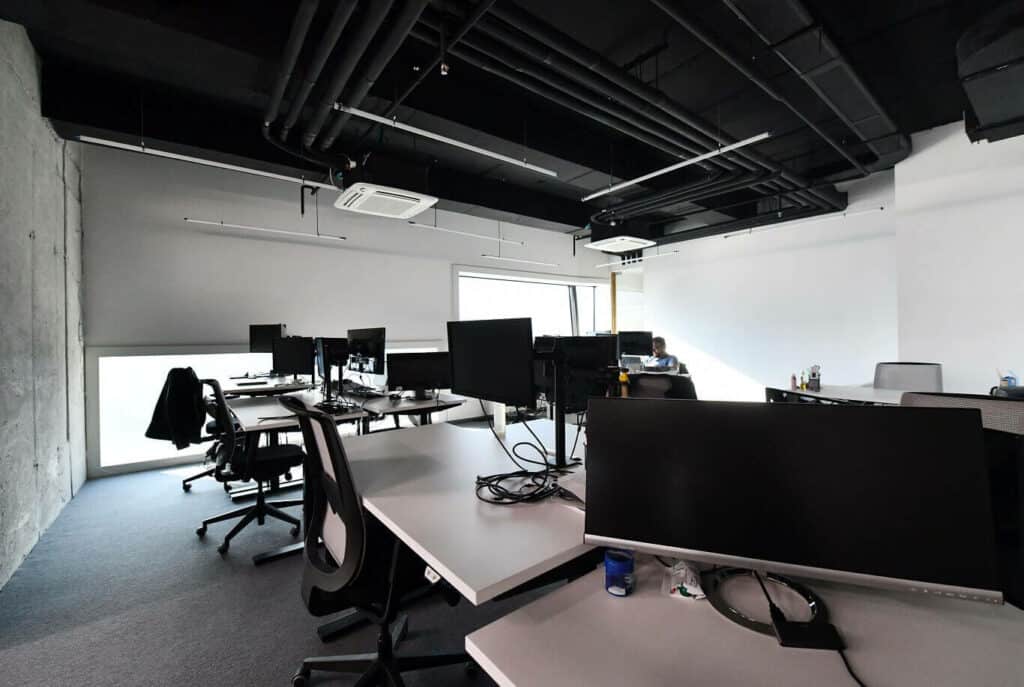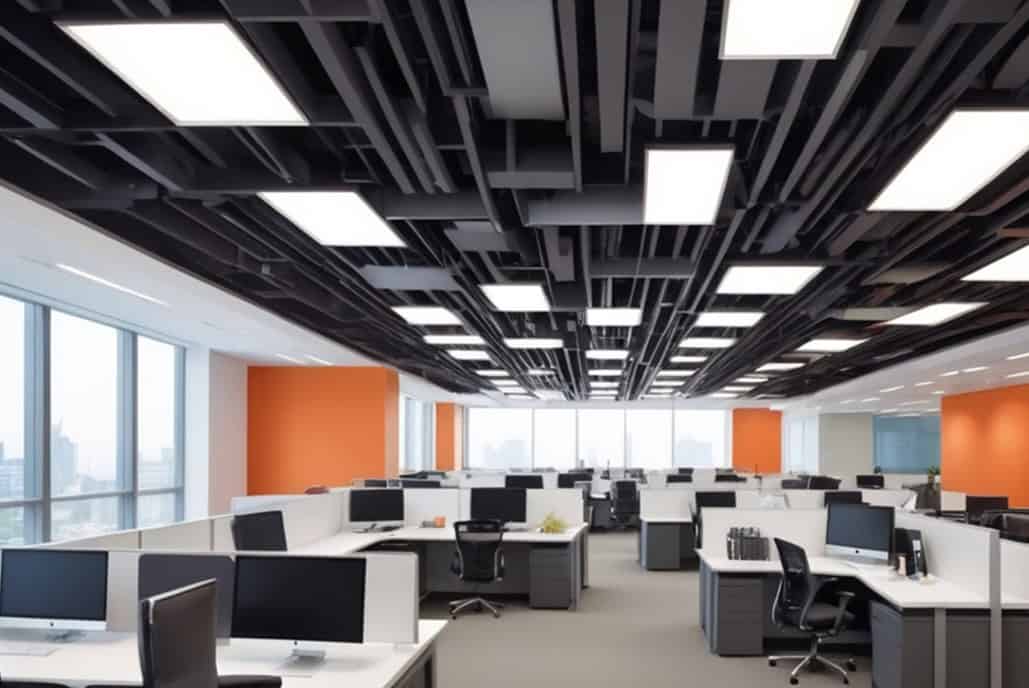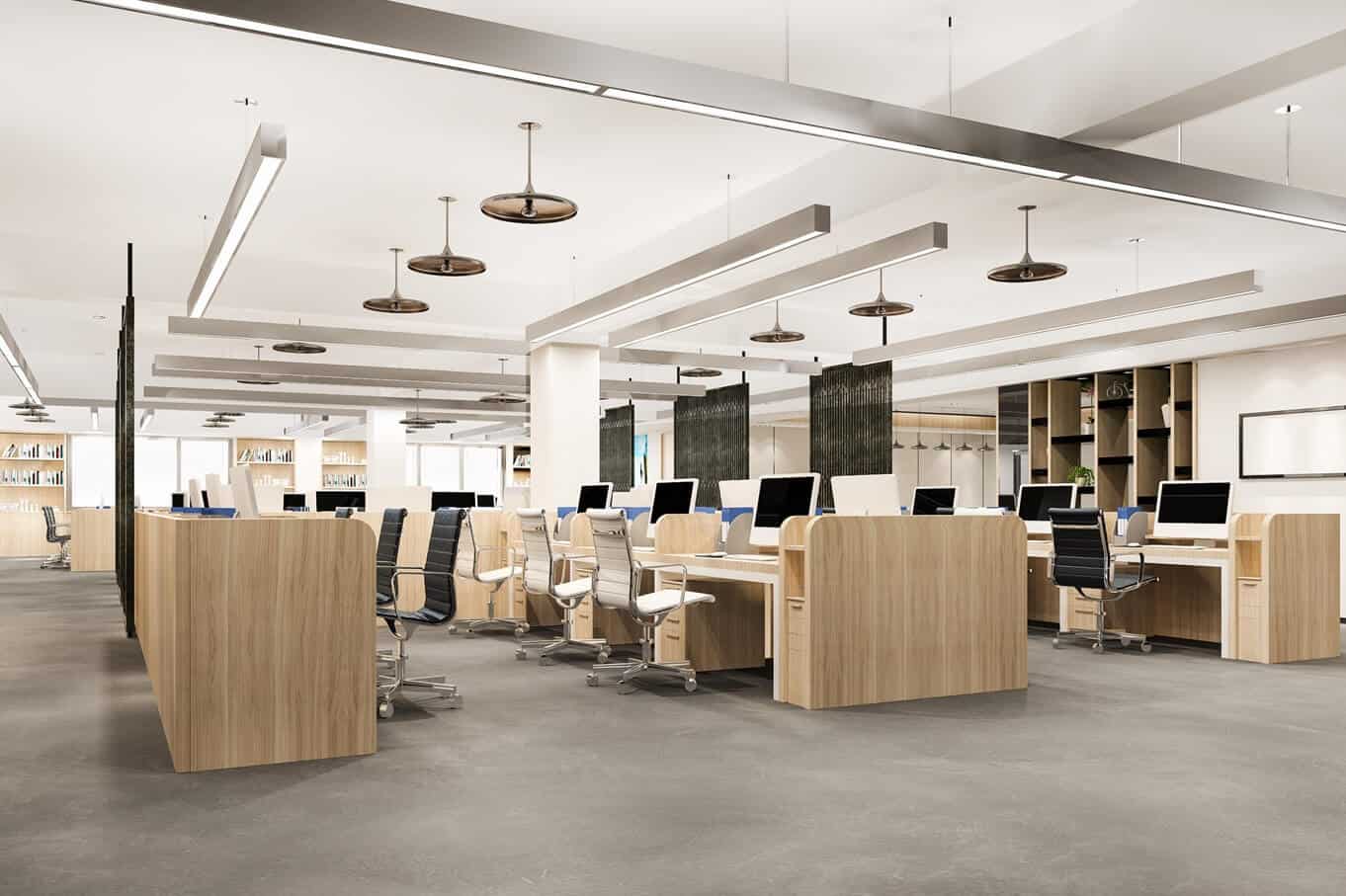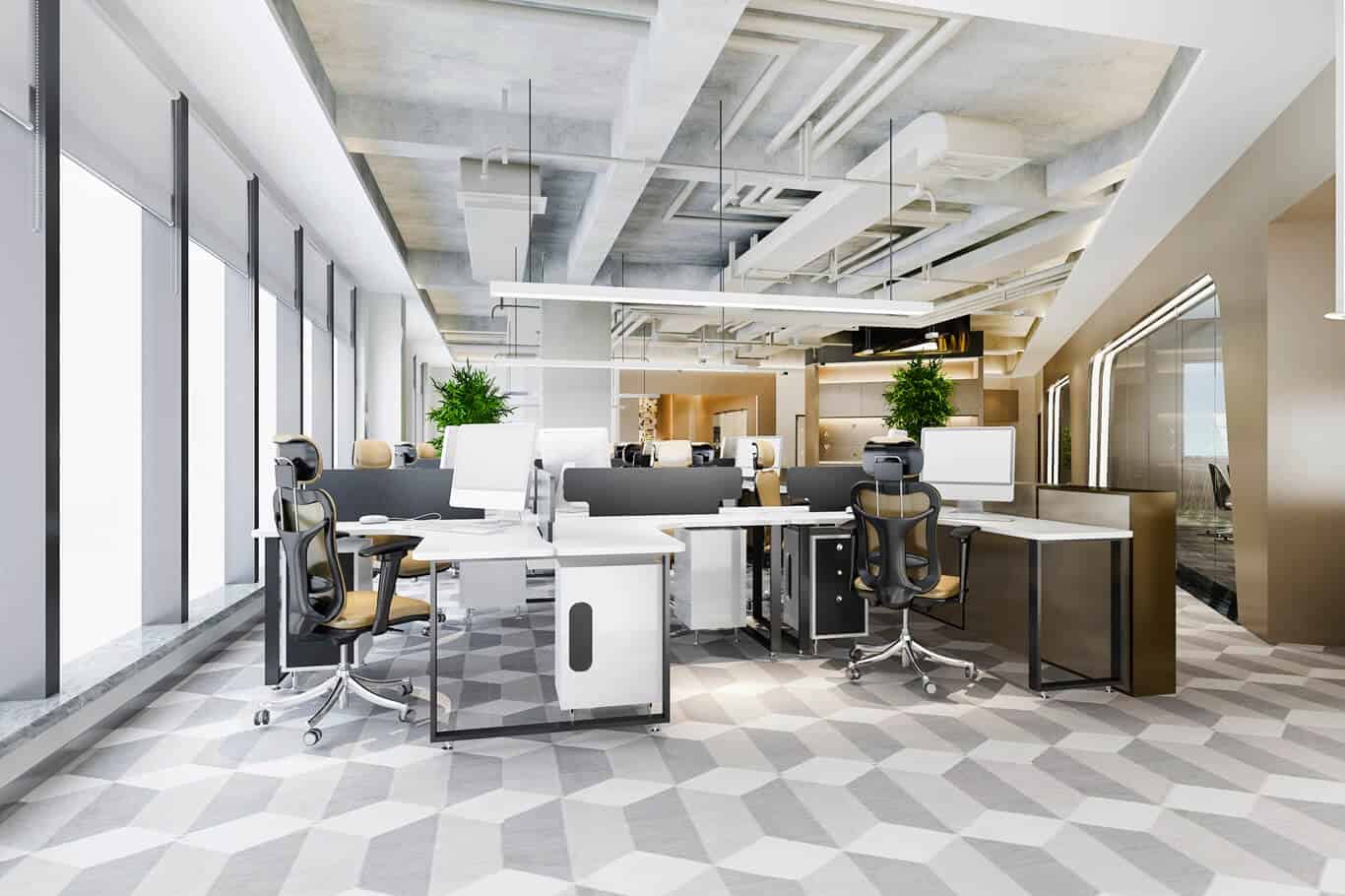Designing an office space involves careful consideration of various elements, and the false ceiling is a crucial aspect that often goes overlooked. A well-thought-out false ceiling can enhance the aesthetic appeal, lighting, and overall ambiance of your workspace.
Choosing the right materials for your false ceiling design for an office cabin is a decision that requires careful attention to detail. In this guide, we will explore different materials and their characteristics, helping you make an informed decision that aligns with both functionality and style.
Purpose of False Ceiling in Office Spaces
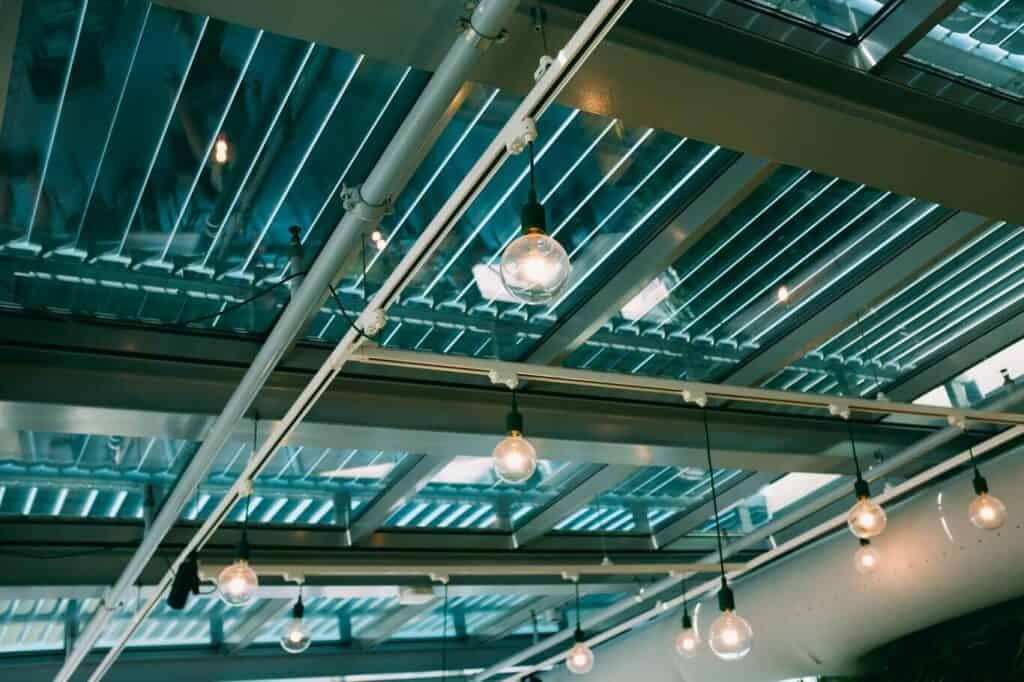
Before delving into materials, it’s essential to understand the purpose of a false ceiling. Modern office false ceiling design, also known as drop ceilings or suspended ceilings, serve several functions in an office setting.
They conceal wiring, provide better acoustics, improve insulation, and offer an opportunity for creative lighting solutions. Identifying your specific needs will guide you in selecting materials that fulfil these purposes effectively.
Common False Ceiling Materials
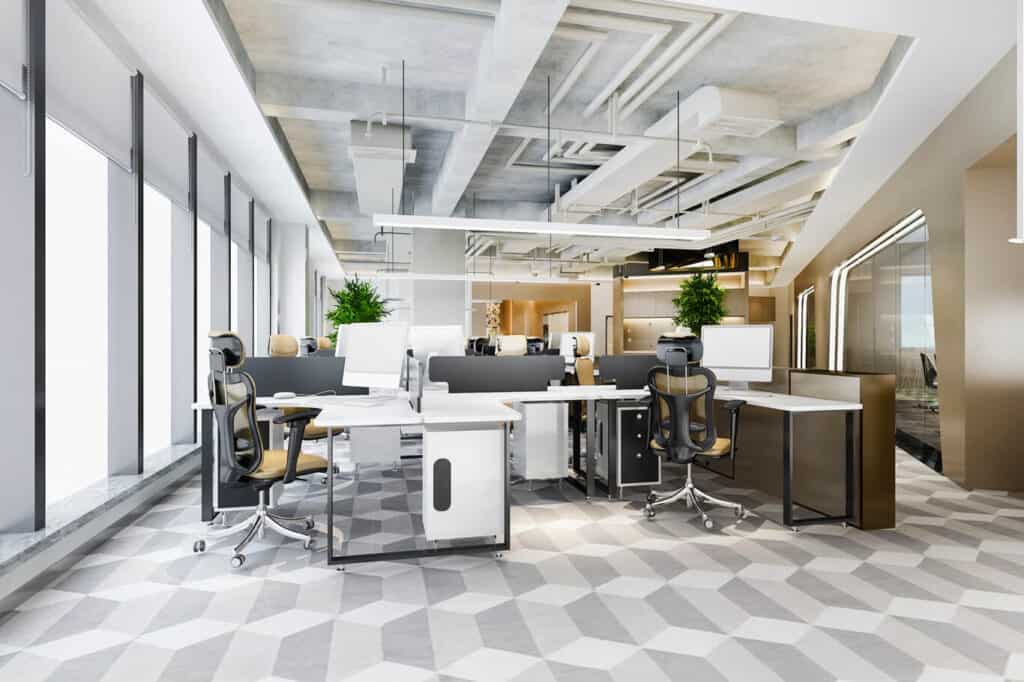
- Gypsum:
- Gypsum is a popular choice for false ceilings due to its versatility and cost-effectiveness.
- It is easy to install and can be molded into various shapes and designs.
- Gypsum boards also provide excellent fire resistance, making them suitable for safety-conscious environments.
- Metal:
- Metal false ceilings, often made of aluminium or steel, offer a modern and sleek appearance.
- They are durable, easy to maintain, and resistant to moisture, making them suitable for humid conditions.
- Metal ceilings are often chosen for their contemporary aesthetic and compatibility with different design styles.
- Mineral Fiber:
- Mineral fiber panels are known for their acoustic properties, effectively reducing sound transmission within the office.
- They are lightweight, easy to install, and offer thermal insulation.
- Mineral fiber ceilings come in various textures and patterns, providing design flexibility.
Considerations for Material Selection
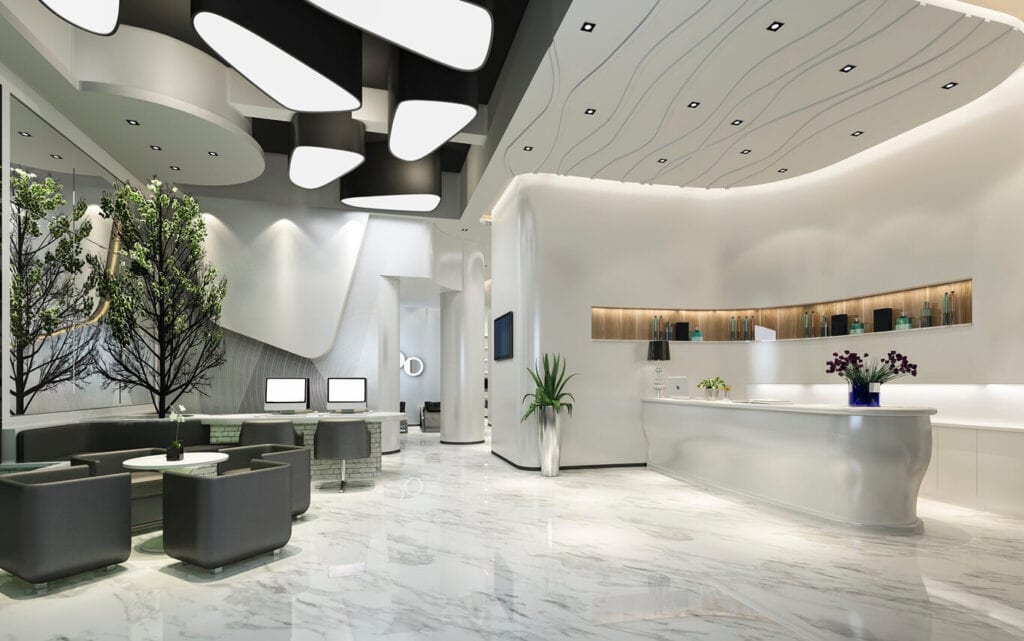
Selecting the right materials for an office false ceiling design involves several considerations, as it not only contributes to the aesthetic appeal but also affects acoustics, lighting, and overall functionality. Here are some key factors to consider when choosing materials for an office false ceiling design:
- Aesthetics and Design:
- Color and Texture: Choose materials that align with the overall design and color scheme of simple false ceiling design for office. Consider the visual impact and how it complements the rest of the interior.
- Pattern and Shape: Some materials allow for creative patterns or different shapes, enhancing the overall design. Consider the design possibilities to create a visually appealing ceiling.
- Durability and Maintenance:
- Resistance to Wear and Tear: Offices experience regular foot traffic, and the false ceiling should be resistant to wear and tear. Choose materials that can withstand daily use without showing signs of damage.
- Ease of Cleaning: Offices need to maintain a clean and professional environment. Select materials that are easy to clean and do not require extensive maintenance.
- Acoustic Performance:
- Sound Absorption: Consider the acoustic requirements of the office space. Certain materials, like acoustic tiles or panels, can help absorb sound and reduce noise levels, creating a more comfortable working environment.
- Sound Reflection: In some cases, you may want to enhance sound reflection for better communication. Reflective materials can help in achieving this goal.
- Fire Resistance:
- Fire-Rated Materials: Ensure that the materials chosen for the false ceiling comply with fire safety standards. Fire-rated materials can provide additional protection and contribute to overall safety in the office.
- Lighting Integration:
- Light Diffusion: Consider how the false ceiling interacts with lighting. Some materials diffuse light effectively, providing even illumination throughout the space.
- Integration with Lighting Fixtures: Ensure that the chosen materials can accommodate lighting fixtures and other elements seamlessly. This can contribute to the overall functionality and aesthetics of the space.
- Climate Considerations:
- Humidity Resistance: If the office is located in a humid climate, choose materials that are resistant to humidity and moisture to prevent issues like mold growth.
- Temperature Stability: Consider how well the materials can withstand temperature fluctuations. This is particularly important in regions with extreme weather conditions.
- Cost and Budget Constraints:
- Material Cost: Evaluate the cost of materials and installation to ensure they align with the budget constraints. Consider long-term savings and benefits when comparing costs.
- Sustainability:
- Environmental Impact: Consider eco-friendly and sustainable materials. Green building practices are increasingly important, and choosing materials with low environmental impact can contribute to a healthier planet.
By carefully considering these factors, you can choose materials for an office false ceiling design that not only enhance the aesthetics of the space but also contribute to functionality, safety, and overall well-being of the team.
Lighting Integration in False Ceilings
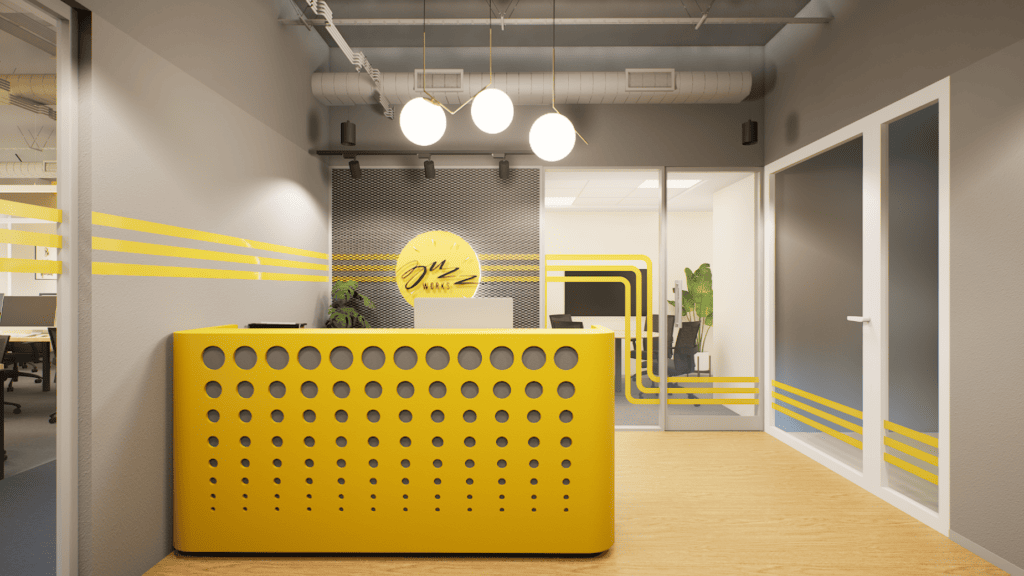
Lighting integration in false ceilings refers to incorporating lighting fixtures into the ceiling structure of a room. This is done not only for functional illumination but also for aesthetic purposes. Here’s a breakdown of the concept in easy language:
Types of Lighting: Lighting can be in the form of overhead fixtures, recessed lights, or even LED strips. These are embedded or installed in the false ceiling to provide light to the room.
Aesthetic Appeal: Integrating lighting into the false ceiling makes the room look more stylish and modern. It creates a seamless and attractive appearance, as the light fixtures are not hanging down but rather hidden within the ceiling.
Even Illumination: Properly integrated lighting ensures that the entire room is evenly lit. This means there are no dark corners or overly bright spots, creating a more comfortable and visually pleasing environment.
Flexibility in Design: False ceilings allow for creative design possibilities. You can arrange lights in specific patterns or use different types of fixtures to achieve the desired look and feel of the room.
Task Lighting: By strategically placing lights in the false ceiling, you can provide focused illumination for specific tasks. For example, brighter lights can be placed over work areas, while softer lighting may be used in relaxation zones.
Hidden Wiring: When lights are integrated into the false ceiling, wiring is hidden from view. This not only improves the aesthetics but also minimizes the visual clutter in the room.
Smart Lighting Control: Many modern integrated lighting systems come with smart controls. This means you can adjust the brightness, color, and even turn the lights on or off using a smartphone or other smart devices.
Energy Efficiency: LED lights, commonly used in integrated ceilings, are energy-efficient. They consume less electricity, which can result in cost savings over time.
Highlighting Architectural Features: Integrated lighting can be used to highlight specific architectural features, such as artwork, wall textures, or design elements. This adds a layer of sophistication to the overall design.
Conclusion:
Choosing the right materials for your office false ceiling design is a critical step in creating a workspace that is not only visually appealing but also functional. Consider the purpose of the false ceiling, the specific characteristics of different materials, and your budget constraints.
By carefully weighing these factors, you can find the best office interior design company that aligns with your office’s design goals and enhances the overall working environment.
You can create your Modern Office Design spaces with Officebanao
If You are Looking to transform your office space into a functional and inspiring environment, Officebanao’s expert office interior designers are here to help. With in-house built technology and years of experience in creating innovative and modern offices, we specialise in designing customised solutions that align with your brand identity and business objectives.

